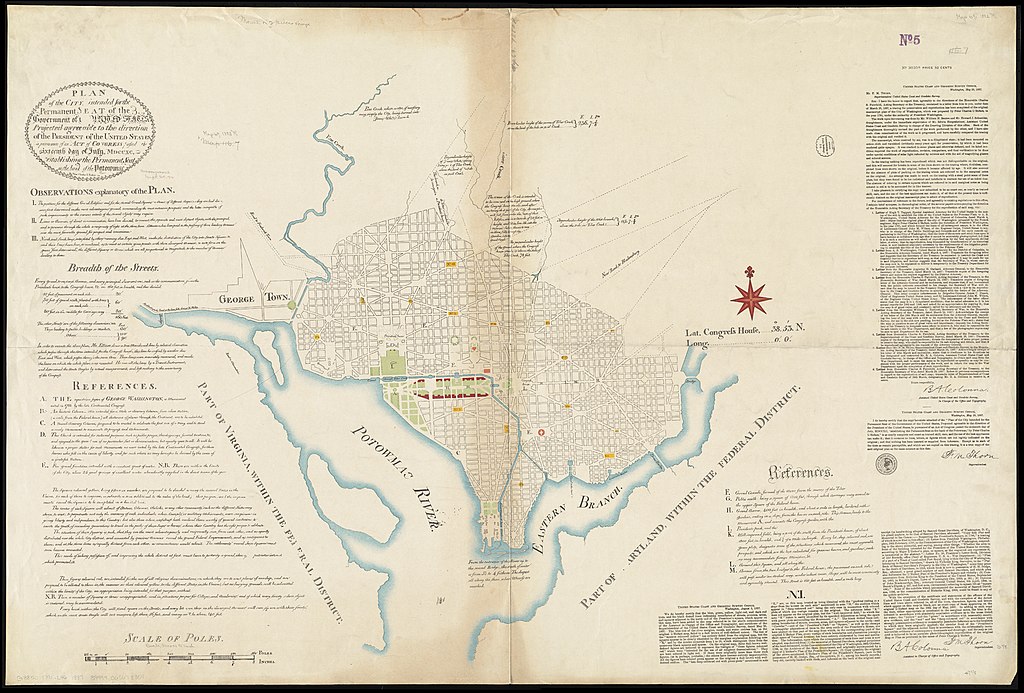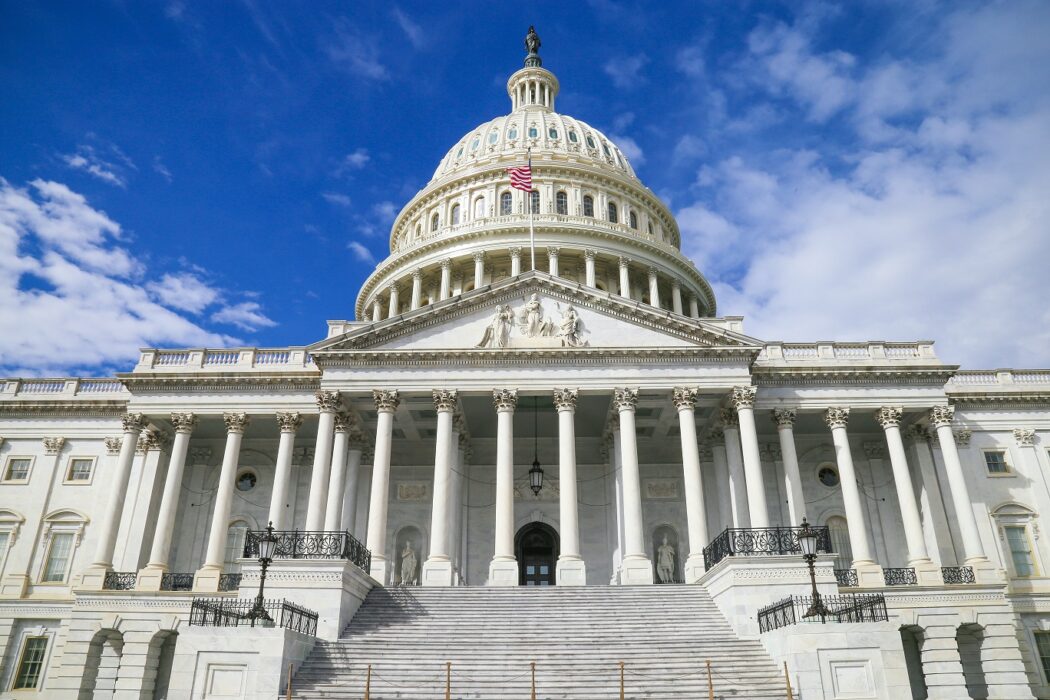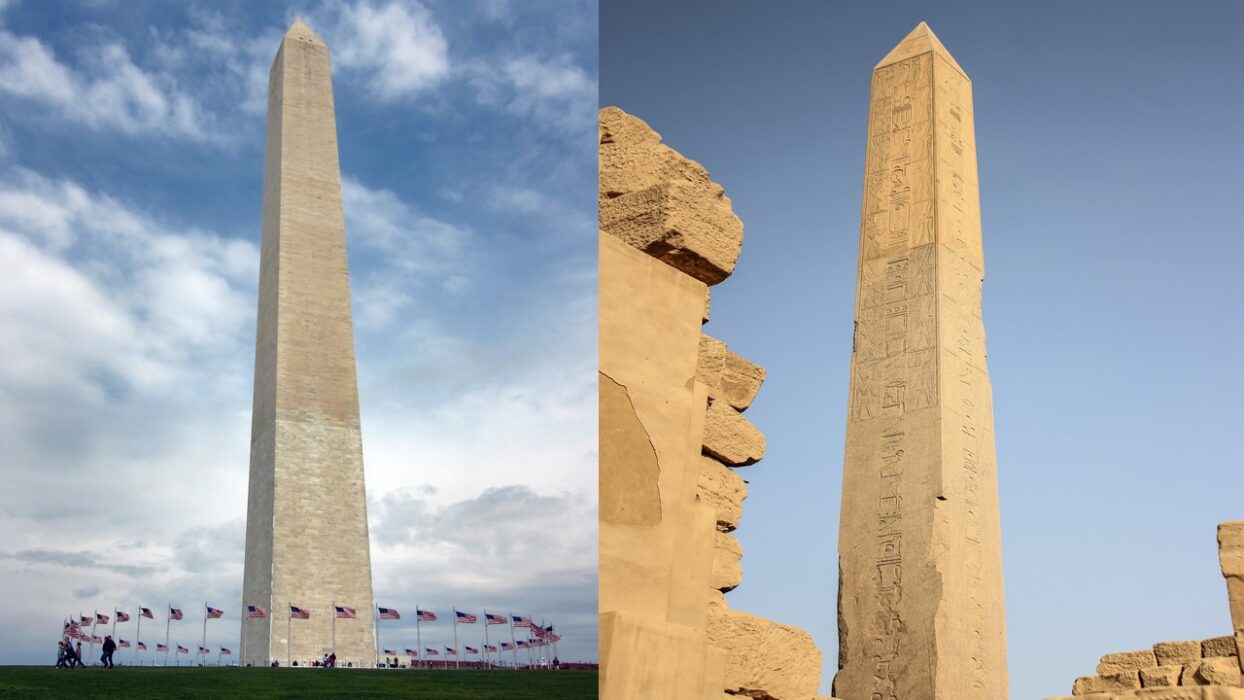Democratic icon, advocate for liberty, equality, freedom of speech and religion, principal author of the Declaration of Independence: as one of the Founding Fathers, Thomas Jefferson seems to be larger than life in the American psyche. So it’s no surprise then, that the memorial for the third president of the United State resembles the Pantheon in Rome (2nd century AD).

Pantheon in Rome
When Michelangelo laid eyes upon the ancient temple in the early 1500’s, he supposedly said “it was a design by angels, not by man.” Considered to be a ‘temple of all gods’ (although historians do not agree if this was the Pantheon’s actual purpose), it’s quite telling that Jefferson’s statue stands inside a similar structure.Not only does it shed light on Jefferson’s stature, but also on the stature of Washington DC; the Pantheon is after all considered a an iconic symbol of ‘Roma Eterna’, the eternal city or ‘Caput Mundi’, capitol of the world.

Thomas Jefferson Memorial
Designed by John Russell Pope, construction of the Thomas Jefferson Memorial started in 1938. It’s dome is supported by a circular colonnade composed of 26 Ionic columns. Stairs lead to a portico with more columns topped by a triangular pediment. Its sculpture depicts Jefferson and the four other members of the drafting committee of the Declaration of Independence (amongst them, John Adams). Inside, right in the center, stands a bronze statue of Jefferson holding the Declaration of Independence, surrounded by quotations from Jefferson’s writings carved into the walls of the memorial chamber. There is his famous line “We hold these truths to be self-evident, that all men are created equal…. “, but we also find quotes on religious freedom, and the evils of tyranny and slavery.
Shrine to freedom?

Statue of Jefferson inside the memorial
In this sense, it’s understandable that in his dedication speech in 1943, Franklin D. Roosevelt called the memorial ‘a shrine to freedom’ and Thomas Jefferson an ‘Apostle of freedom’. But does Jefferson really deserve that much credit as a freedom fighter? True, Jefferson was dedicated to the principles of freedom, equality and liberty. His thinking, writings and work as a statesman were of major importance in the creation of the United States and its universal principles of self-government. He frequently spoke about slavery as a moral depravity, and was not afraid to push back against the interests of slaveholders. And yet he enslaved more than six-hundred people over the course of his life.
History is kind to its heroes. For quite some time, this aspect of Jefferson’s life was touched upon only in passing. And if it was, the Founding Father was often described as treating his slaves with kindness and care. In more recent times, historians have made an effort to tell a more realistic story (as in this article: ‘The Dark Side of Thomas Jefferson’ by Henry Wiencek).
Contradiction

Slave cabin at Jefferson’s estate Monticello
Jefferson was clearly struggling with this contradiction himself. He realized very well that the new nation and its democracy could be crushed by the institution of slavery, but he seemed unable or ultimately unwilling to act, something that would have harmed his own way of life. He writes that maintaining slavery was like “holding a wolf by the ear, and we can neither hold him, nor safely let him go.” It made an abolitionist from Virginia remark: “Never did a man achieve more fame for what he did not do.” So, the almost mythological proportions that have been assigned to Thomas Jefferson, amplified by his memorial with its connotations to the ancient world, should be treated with caution.
The Civil War, fought over the institution of slavery, rocked the country to its core, just as Jefferson predicted. But the United States survived and grew to become a superpower. And although superpowers have the tendency to perish sooner or later, for now, the Eternal City still stands.
Mieke Bleeker works as event coordinator at the John Adams Institute. She holds a Master of Arts degree from the Vrije Universiteit Amsterdam, where she studied Ancient History. Her fascination for the history and politics of the United States inspires her to visit the country regularly. She has written other blog series for the John Adams, about John Brown’s attack on Harpers Ferry, and about the Pilgrim Fathers.




